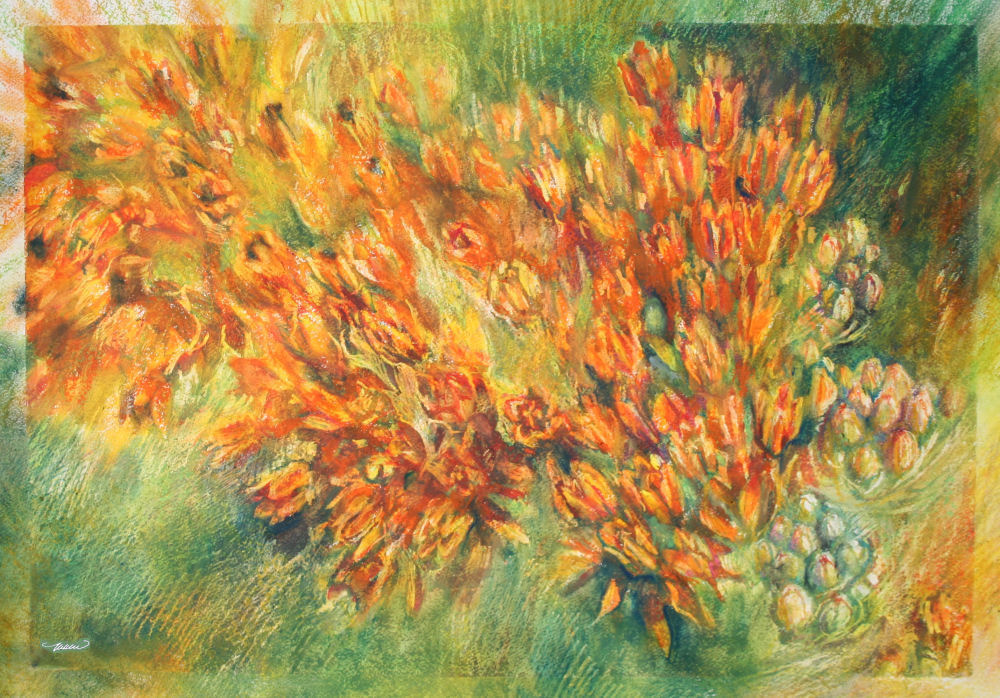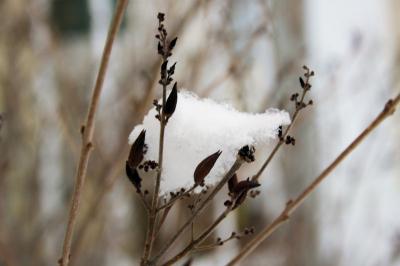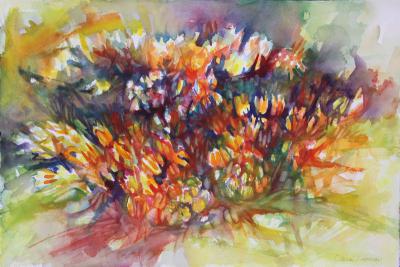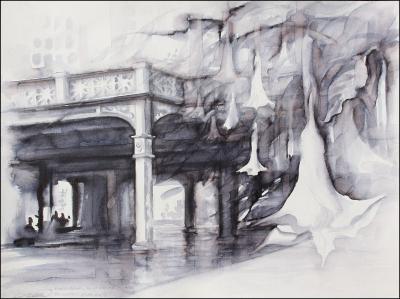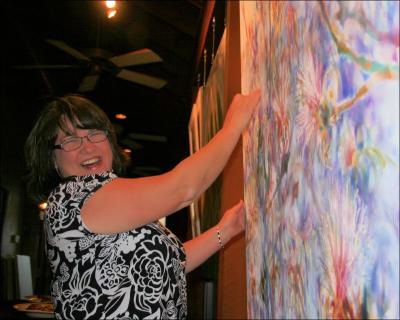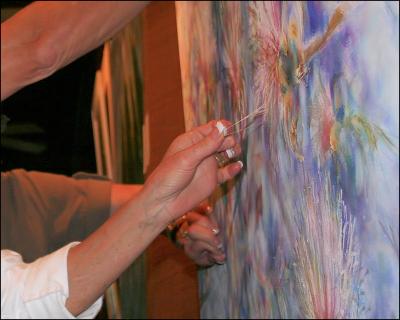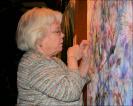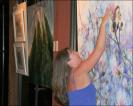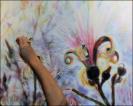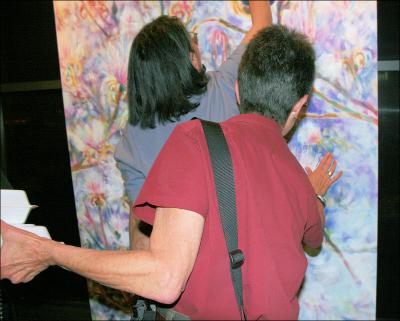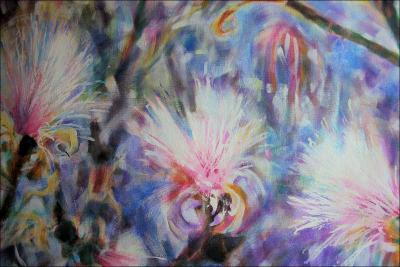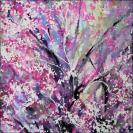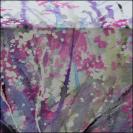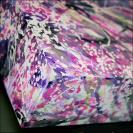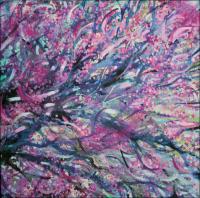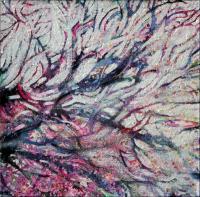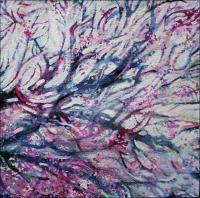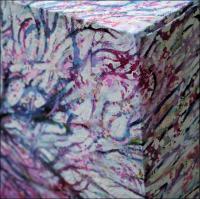flowers
« Previous Entries Next Entries »Basic Drawing workshops in May
Monday, April 26th, 2010
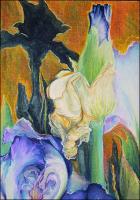 Iris, 24 x 18 inches Oil Pastels on paper
Iris, 24 x 18 inches Oil Pastels on paper
Basic Drawing and Color Play
Workshops
Dates:
1) Saturday, May 15th 10:30 a.m. – 4:00 p.m.
2) Saturday, May 22nd 10:30 a.m. – 4:00 p.m.
Ages: Young adult (16) – Adult – Seniors
Experience Level:
Beginners to Experienced Artists, maximum number of participants: 6
The Workshop:
We will sketch simple objects using a variety of loosening-up techniques, graduating to a more complex still-life arrangement, fun with color, then a longer study period in the afternoon.
Supplies:
Bring favorite reference photos or items that you’d like to study, sketchpad and supplies that you usually work with. A variety of papers and drawing supplies will be on hand to experiment with during class. Also bring beverage and lunch.
Fees:
Registration (pre-paid) – $50.00 Oxide Gallery 501 West Hickory St., Denton, Texas 940-483-8900
Registration Deadlines:
March 12th and March 19th – Maximum Students per Class 6
Merging Visions Exhibition
Tuesday, April 6th, 2010
Milkweed Melody, 27H x 33W inches framed Oil Pastels on 140 lb cold pressed premium watercolor paper. Has brassy-gold frame painted with an extension of the drawing.
Partnering with poet Christina Smith and her poem, Earth’s Love Song Milkweed Melody is showing April 1st – 30th at the VAST (Visual Arts Society of Texas) and Denton Poets Assembly collaborative event, Merging Visions Exhibition, with art and poetry at both the Emily Fowler and North Branch Libraries, Denton, Texas. Opening Receptions Saturday, April 17th 10 a.m. – 12 p.m. at Emily Fowler and 1 – 3 p.m. at North Branch
Viper’s Bugloss
Thursday, February 25th, 2010
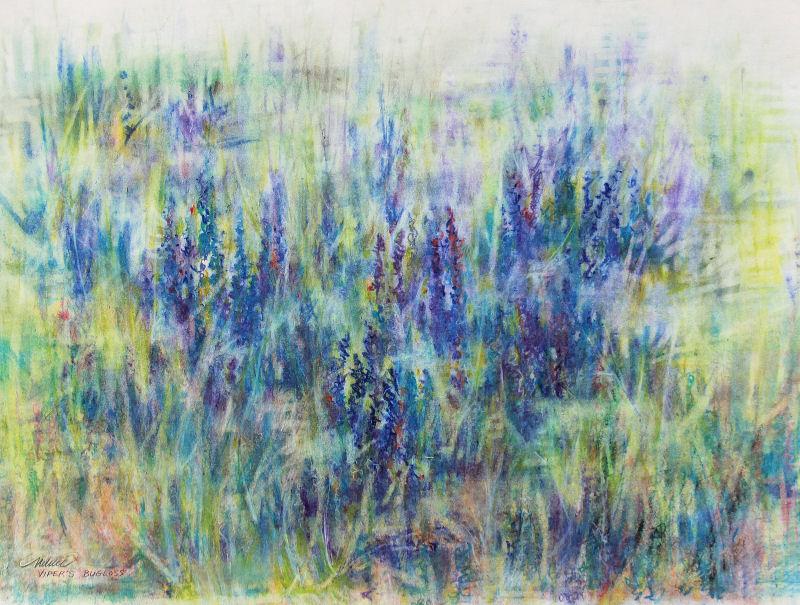
Viper’s Bugloss, 18H x 24W inches soft pastels on paper.
It’s tempting to pick these for wildflower bouquets, but the plant is very irritating to the skin, so are best enjoyed left where they are, growing en masse in summer fields beside the highways in eastern Ontario, Canada.
I was curious about the name… according to the Encyclopedia of Herbs and Herbalism edited by Michael Stuart (c. 1979, 1987 ISBN 0-9999-48911), they were formerly one of the most respected plants used for the treatment of viper’s snake bite venom.
Happy Holidays
Friday, December 25th, 2009
Merry Christmas from Airdrie, Alberta
Snow on French Lilac
Check out the Alberta/Texas phone interview for a pull-out feature in today’s Denton Record Chronicle.
Orange Milkweed
Saturday, November 21st, 2009
Orange Milkweed, Kentucky 15 x 22 inches watercolors on paper, sold
Driving from Texas to Ontario one summer I had to pull over to take photos and a closer study of the vivid orange bouquets growing beside the highway in southern Kentucky. The colors are irresistible, and this is not the first or last time I’ll portray this subject. All plants and trees contain medicinal and useful chemical properties in their leaves, stems, roots and flowers.
I looked up Orange Milkweed in the most informative books about plants, The Encyclopedia of Herbs and Herbalism edited by Malcom Stuart, which contains details about every plant I have ever sought to find information for. According to it, Appalachian Indians made a tea from the leaves to use during religious ceremonies. One common name for this plant is “Pleuracy Root”, as it is still useful to treat infections of the respiratory tract including pleurisy It is used as a diaphoretic, antispasmodic, carminative, expectorant. Color also has enchanting, supernatural energizing properties!
Angel’s Trumpet
Tuesday, November 10th, 2009
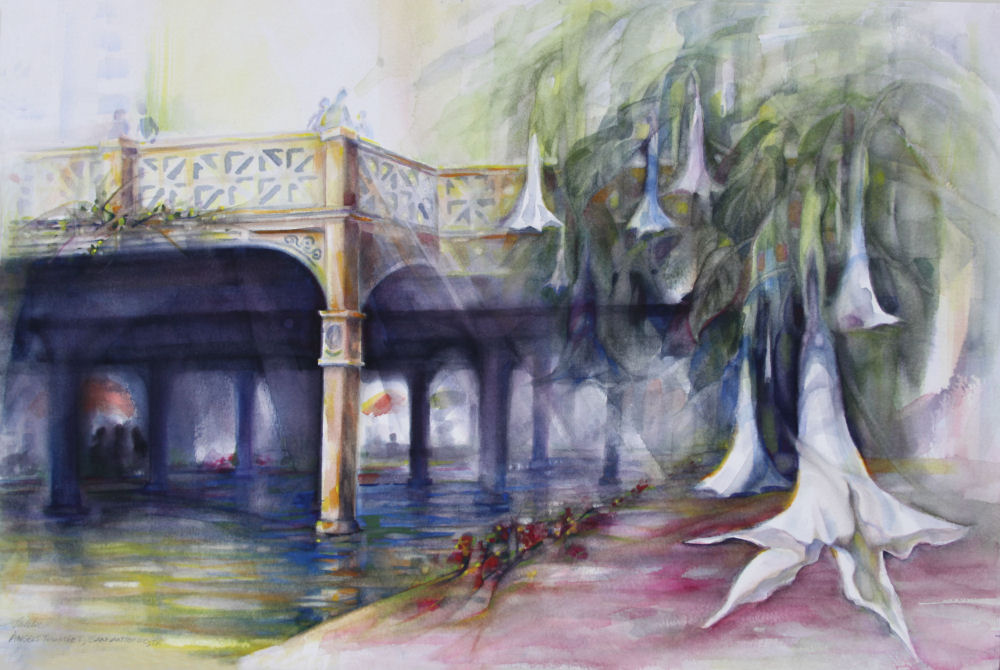
Angel’s Trumpet (Brugmansias) San Antonio Riverwalk, Texas – 14H x 22W inches watercolors on 140 lb. cold pressed premium, white mat
Value study
Thursday, November 5th, 2009
Angel’s Trumpet value study, San Antonio Riverwalk, Texas –12 x 16 inches Tombo pen wash on 140 lb. WC paper.
The Tombo pen is a two-in-one water-soluble marker available in colors as well as black. One tip is medium-fine and the other looks and behaves like a Chinese paintbrush, where thickness of lines can be controlled. What’s more difficult to control is that black once it’s on the page! It’s something to pay attention to when painting the colored version.
Preliminary studies are useful with watercolors because if, in trying to correct and re-work areas, the integrity of the paper is easily lost, especially on inexpensive papers. Still, on a traditional watercolor a lot can be done by adding water to pull out the dark where it’s not wanted, and push out areas of paint with dry brushes. Some places in this study have built-up 3D edges created by the paper bits because I pushed them around so much with a stiff brush to correct things, but traditionally this is not acceptable.
Actually, come to think of it, that might be interesting to deliberately sculpt the paper in strategic areas – like objects in the foreground – by saturating it with too much water, then while painting, brush the resulting paper bits into piles and mold them with a stiff brush. I may try that in the final colored painting of this scene. This proves once more that every single painting is an experiment to find ways to turn disadvantages and limitations into advantage and innovation.
Even though WC and Acrylics are water-friendly and watered-down acrylics is the method I use to start most canvas paintings, I’m noticing a few outstanding differences : 1) an off-balance composition seems to be more noticeable with WC, definitely not as correctable 2) improved attention to drawing, details and ultra-conscious 3) requires pre-planning and foresight to keep the work fresh and clean 4) commands enough confidence to swish the paint on quickly as if it was not planned.
Interactive
Saturday, April 25th, 2009
At the end of each month Oxide Gallery and Carino’s Italian Restaurant in Denton present an evening of Art, Dinner and Wine Tasting. Offering a new menu each month, an amazing four course dinner is complete with wine pairings for only $29.95. The room is separate from the rest of the restaurant, so offers an intimate setting where, at some point during the evening, the artist discusses and answers questions about their work. A new artist’s work is featured each month, and on Tuesday it’s my turn. Although this is a new idea it has been well received. Reservations are required, but April 28th is now booked solid, so the Dinner and Show is extended to take place on April 29th as well.
The Interaction with Flowering Shavingbrush Tree
I reapplied masking fluid to the painting in order to continue working on it but still preserve all the great marks revealed after removing the first application. At Carino’s on Tuesday others will participate and be a part of helping this painting come to life by removing the dried rubberized medium from the painting, and help unveil the finished piece.
Update, May 1st: Pulling off the rubberized medium was a hit! A few people kept going back to pull more off. If gallery owners are open to it, I’d like to continue doing this at future opening receptions too. Here are some photos of the fun.
“One last peel before I go…”
The perfect place for masking fluid
Monday, April 13th, 2009
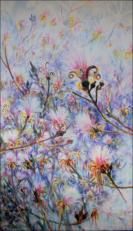 Flowering Shavingbrush Tree, April 11th above: details of 85H x 45W x 3D inches acrylics on canvas,wrapped sides painted, trim frame. Still in progress, but the rubberized mask was removed in order to see exactly what stage things are at before continuing. The painting overall still has a few areas to open up; very little work tomorrow should finish it. Shortly after starting the painting I turned it upside down and applied the masking fluid with a toothpick and let it drip. Gravity can be used as a tool!
Flowering Shavingbrush Tree, April 11th above: details of 85H x 45W x 3D inches acrylics on canvas,wrapped sides painted, trim frame. Still in progress, but the rubberized mask was removed in order to see exactly what stage things are at before continuing. The painting overall still has a few areas to open up; very little work tomorrow should finish it. Shortly after starting the painting I turned it upside down and applied the masking fluid with a toothpick and let it drip. Gravity can be used as a tool!
April 13th, Left: The top third will still leave as much of the primed canvas as possible; a gradation of unfinished space toward more finished at the bottom. I was hoping to leave it as seen here giving an airy illusion, but it does need to develop along with the rest of it…still not as much, but enough to show the main flower better. This means I’ll be once again dripping masking fluid on the piece upside down to preserve the interesting marks that occurred from the 1st application, and also create some new ones with any further work. For previous posts on earliest progress of this painting click here.
Eastern Redbuds
Saturday, April 11th, 2009
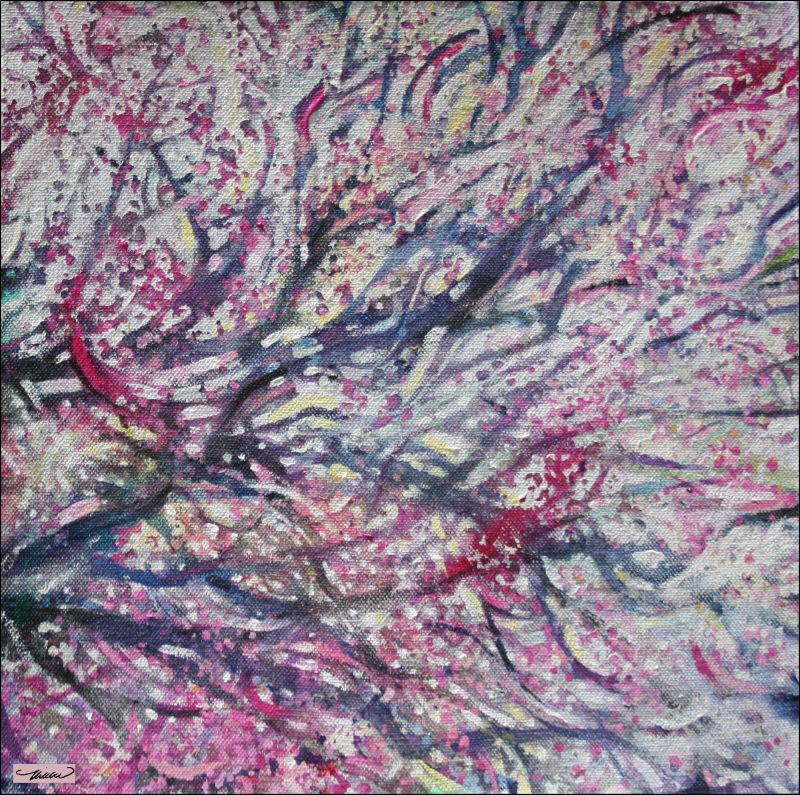
Eastern Redbuds – Spring in Dallas, TX – finished April 11, 2009, took off all remaining masking fluid. 11H x 11W x 3D inches, acrylics on canvas, wrapped sides painted. Signature is on the side, so one is superimposed here on the front. Hang on a wall or display on a flat surface.
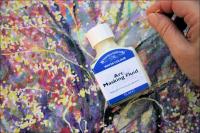 Eastern Redbuds is the first of sixteen 11H x 11W x 3D inches acrylics on canvas paintings of various aspects of trees, to hang together as a group or flanking other paintings. This one uses masking medium to block out areas of white. The first layer of dried medium was removed in the above thumbnails. Afternoon post, left: Adding another layer of masking fluid, seen as yellow.
Eastern Redbuds is the first of sixteen 11H x 11W x 3D inches acrylics on canvas paintings of various aspects of trees, to hang together as a group or flanking other paintings. This one uses masking medium to block out areas of white. The first layer of dried medium was removed in the above thumbnails. Afternoon post, left: Adding another layer of masking fluid, seen as yellow.
Feb. 25th: below left, looks better turned on its side but it could be hung either direction, mask was removed then the painting was overworked unintentionally – all the marks that were the whole point of using masking fluid are hardly visible.
So on Feb. 26th: below right, more mask was applied, then white painted between branches, tore away a few select areas of the dried mask and left the rest on as texture.
« Previous Entries Next Entries »


